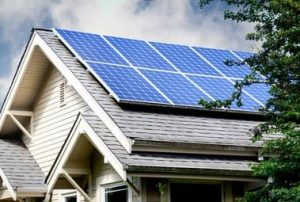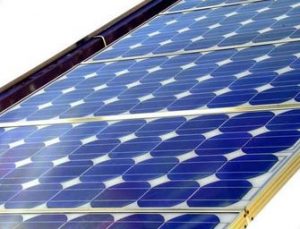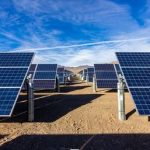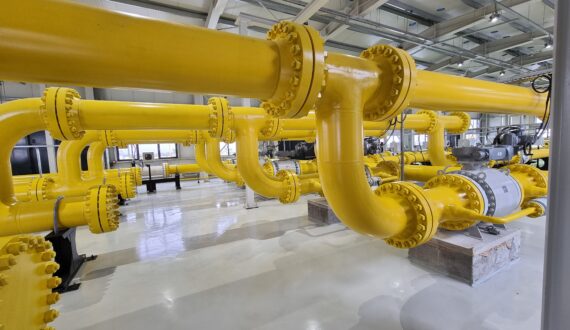There are many things to learn about photovoltaic panels and the clean energy we can benefit from them. Starting with this article, we open the series of materials in which we will bring you more information about renewable energy sources, intelligent energy consumption, what it means to be prosuming and, of course, about photovoltaic panels.
We titled this series of articles “Green Romania” because we want to be as close as possible to you, to try to educate and build together a clean Romania for the future. The first article in this series brings to the fore some basics about photovoltaic panels, how they work, what solar cells are and how they are produced.
What are photovoltaic panels? How do photovoltaic panels work?
General Information
Photovoltaic (PV) means the conversion of light into electricity using semiconductor materials that have the photovoltaic effect, a phenomenon studied in physics, photochemistry and electrochemistry.
The photovoltaic panel is the generator with which the energy is manufactured within the photovoltaic system.
Photovoltaic solar energy is the energy produced by solar photovoltaic cells, which convert sunlight directly into electricity.
PV has become the cheapest source of electricity in regions with high solar potential. Panel prices have fallen by 10% in ten years. In this case, competitiveness is beneficial and paves the way for the global transition to sustainable energy and the reduction of global warming.
A photovoltaic system uses solar modules, each comprising a number of solar cells, which generate electricity.
Photovoltaic systems can be mounted on the ground, on the roof, on the wall or floating. The mount can be fixed or a solar tracker can be used to track the sun in the sky.
 Solar PV systems have specific advantages as an energy source: once installed, their operation does not generate pollution or greenhouse gas emissions, shows a simple scalability in terms of energy needs, and silicon has a high availability in the earth’s crust .
Solar PV systems have specific advantages as an energy source: once installed, their operation does not generate pollution or greenhouse gas emissions, shows a simple scalability in terms of energy needs, and silicon has a high availability in the earth’s crust .
Photovoltaic systems have long been used in specialized applications as stand-alone installations, and grid-connected photovoltaic systems have been used since the 1990s. Photovoltaic modules were first mass-produced in 2000, when German environmentalists and the organization Eurosolar has obtained government funding for a ten thousand roofing program.
As technology has advanced, the production process has improved and thus the cost has decreased, the reliability has increased and so has the efficiency of photovoltaic installations. Metering incentives and financial incentives, such as preferential supply tariffs for solar-generated electricity, have supported solar photovoltaic installations in many countries. More than 100 countries now use solar energy.
After hydraulic and wind energy, PV is the third largest source of renewable energy in terms of capacity. The International Energy Agency expects an increase of 700-880 GW from 2019 to 2024. According to the forecast, PV could become by mid-2020 the technology with the highest installed capacity.
In 2018, the installed photovoltaic capacity worldwide increased to over 515 gigawatts (GW), covering about two percent of global electricity demand.
Solar cells used in photovoltaic panels
 Solar cells generate electricity directly using sunlight.
Solar cells generate electricity directly using sunlight.
The photovoltaic system is best known as a method of generating electricity by using solar cells to transform energy from the sun into a flow of electrons through the photovoltaic effect.
Solar cells produce electricity directly from sunlight, which can be used to power equipment or recharge a battery.
The first practical application of photovoltaics
The first practical application of photovoltaics was to orbit satellites and other spacecraft, but today most photovoltaic modules are used for grid-connected systems to generate electricity. In this case, an inverter is needed to convert direct current to alternating current.
There are other smaller markets for remote, remote controlled systems for homes, boats, recreational vehicles, electric cars, roadside emergency telephones, remote sensing and cathode protection of pipes.
Photovoltaic power generation uses solar modules composed of a number of solar cells that contain a semiconductor material. Copper solar cables connect modules (module cable), arrays (matrix cables) and subfields. Due to the growing demand for renewable energy sources, the production of solar cells and photovoltaic panels has advanced considerably in recent years.
The generation of solar photovoltaic energy has long been seen as a clean energy technology that is based on the most abundant and distributed source of renewable energy on the planet – the sun. Cells require environmental protection and are usually packed tightly in solar modules.
The power of the PV module is measured under standard test conditions (STC) in “Wp”. Actual power in a particular location may be less than or greater than this face value, depending on geographic location, time of day, weather conditions, and other factors. The capacity factors of the photovoltaic network are usually below 25%, which is lower than many other industrial sources of electricity.
Types of photovoltaic systems
Mobile terrestrial photovoltaic systems – For best performance, terrestrial photovoltaic systems aim to maximize the time they are exposed to the sun. This is done with the help of solar tracking systems, by moving the photovoltaic modules according to its position in the sky. Increasing the exposure of photovoltaic panels can be up to 20% in winter and up to 50% in summer.
 Mounted static photovoltaic systems can be optimized by analyzing the solar path. Photovoltaic modules are often set to latitude inclination, an angle equal to latitude, but performance can be improved by adjusting the angle for summer or winter. In general, as with other semiconductor devices, temperatures above room temperature reduce the performance of photovoltaic modules.
Mounted static photovoltaic systems can be optimized by analyzing the solar path. Photovoltaic modules are often set to latitude inclination, an angle equal to latitude, but performance can be improved by adjusting the angle for summer or winter. In general, as with other semiconductor devices, temperatures above room temperature reduce the performance of photovoltaic modules.
Vertical photovoltaic systems
A number of solar modules can also be mounted vertically to each other in a tower, if the zenith distance of the Sun is greater than zero, and the tower can be rotated horizontally as a whole and each additional module around a horizontal axis. In such a tower, the modules can follow the Sun exactly. Such a device can be described as a ladder mounted on a rotating disk. Each step of that ladder is the middle axis of a rectangular solar panel. If the zenith distance of the Sun reaches zero, the “ladder” can be rotated north or south to avoid a solar module that produces a shadow on a lower one. Instead of an exactly vertical tower, you can choose a tower with an axis pointing towards the North Star, which means that it is parallel to the axis of rotation of the Earth. In this case, the angle between the axis and the Sun is always greater than 66 degrees.
 During a day you only need to rotate the panels around this axis to follow the Sun. Installations can be mounted on the ground (and sometimes integrated with agriculture and grazing) or incorporated into the roof or walls of a building (photovoltaic integrated in the building). ((photovoltaic integrated in the building)).
During a day you only need to rotate the panels around this axis to follow the Sun. Installations can be mounted on the ground (and sometimes integrated with agriculture and grazing) or incorporated into the roof or walls of a building (photovoltaic integrated in the building). ((photovoltaic integrated in the building)).
How are photovoltaic panels produced?
In general, the manufacturing process of solar photovoltaics is simple, in that it does not require many complex or mobile parts. Due to the solid nature of photovoltaic systems, they often have relatively long lifetimes, between 10 and 30 years. To increase the electrical power of a photovoltaic system, the manufacturer simply needs to add more photovoltaic components. As production increases, economies of scale are achieved which lead to lower costs, which is to the advantage of both the producer and the final beneficiary.
Stages of manufacturing silicon photovoltaic systems
The manufacture of silicon photovoltaic systems has several stages. First, the poly-silicone is processed from mined quartz until it is very pure (semiconductor grade). This is melted when small amounts of boron, a group III element, are added to make a p-type semiconductor rich in electron holes. Usually using a seed crystal, an ingot of this solution is grown from the liquid polycrystalline. The ingot can also be poured into a mold. The plates of this semiconductor material are cut from the bulk material with wire saw, then pass through surface etching before being cleaned. Then, they are placed in a phosphorus vapor deposition furnace, which lays a very thin layer of phosphorus, a group V element, which creates a n-type semiconductor surface. To reduce energy losses, the surface is added an anti-reflective layer, together with the electrical contacts. After completion of the cell, the cells are connected by electrical circuit according to the specific application and ready for transport and installation.
Crystalline silicon photovoltaics are a type of photovoltaic system and, although they represent the majority of solar cells currently produced, there are many new and promising technologies that have the potential to be amplified to meet future energy needs. Starting in 2018, crystalline silicon cell technology serves as the basis for several types of PV modules, including monocrystalline, multicrystalline, mono PERC and bifacial.
Thin film photovoltaics
Another newer technology, PV with thin film, is manufactured by depositing semiconductor layers on the substrate in a vacuum. The substrate is often made of glass or stainless steel, and these semiconductor layers are made of several types of materials, including cadmium telluride (CdTe), copper diselenide (CIS), indium copper diselenide (CIGS), and amorphous silicon. -And). After being deposited on the substrate, the semiconductor layers are separated and connected by electrical circuits by laser writing. Thin film photovoltaics now accounts for about 20% of total photovoltaic production due to reduced material requirements and the cost of manufacturing thin film modules compared to silicon-based wafers.
Other emerging photovoltaic technologies include organic, paint-sensitized, quantum and perovskite photovoltaics. OPVs fall into the category of thin film manufacturing and usually operate around the efficiency range of 12%, which is less than the 12–21% typically observed for silicon-based PVs. Because organic photovoltaics require very high purity and are relatively reactive, they must be encapsulated, which greatly increases the cost of manufacturing and which means that they are not feasible on a large scale. Dye-sensitized PVs are similar in efficiency to OPVs, but are significantly easier to manufacture. However, these dye-sensitized photovoltaics have storage problems because the liquid electrolyte is toxic and can penetrate the plastic potential used in the cell. Quantum dot solar cells are point sensitized DSSCs and are processed by solution, which means that they are potentially scalable, but currently have an efficiency level of 12%. Perovskite solar cells are a very efficient solar energy converter and have excellent optoelectric properties for photovoltaic purposes, but they are expensive and difficult to manufacture.
Source: wikipedia.org








